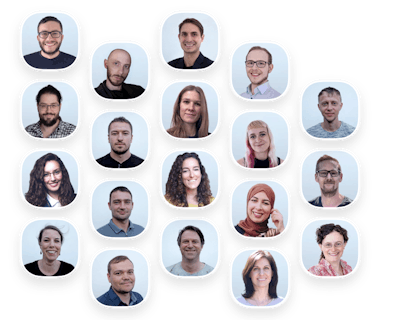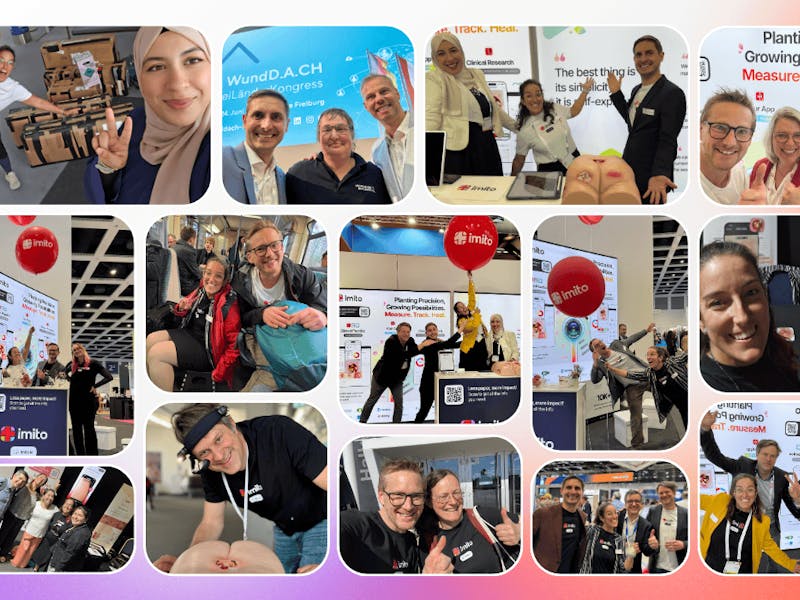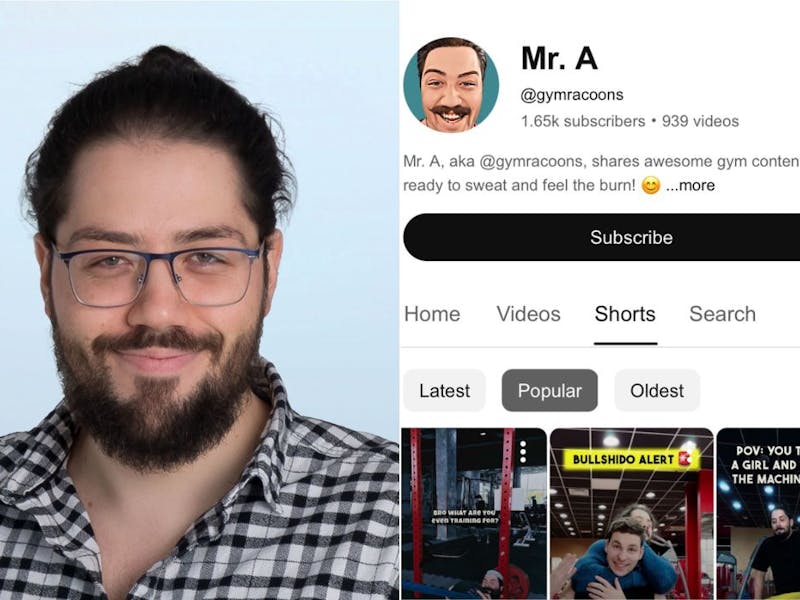What was one of the first departments that used imitoCam?
We started back then in the surgical outpatient clinic and in dermatology - the first departments to use the app and truly pioneer its adoption in our hospital.
Very soon, word of the “super helpful” app spread through personal recommendations and internal exchanges across the hospital, even between different locations. More and more departments saw the potential and wanted to test and implement imitoCam.
Step by step, we rolled it out to other areas, including hand surgery, occupational therapy, pediatrics, intensive care, emergency, the operating room, psychiatry, as well as various medical wards such as neurology, oncology, palliative care, and the pain center. The list is probably not even complete. Even after I was able to hand over the project to my successor, more departments - like the entire women’s clinic - were equipped with the app.
And the core benefit was the quick photo capture and archiving?
Exactly, the fast and simple archiving. I also received feedback from users that sometimes they even document more, simply because it’s so much easier.
 © imito AG / Chrysanth Sulzberger
© imito AG / Chrysanth Sulzberger
Before imitoCam, the workflows were much more time-consuming: first, a photo had to be taken with a digital camera, then the files were manually uploaded to the computer and assigned to the right patient. imitoCam streamlined these processes enormously. At that time, we didn’t even have smartphones in our hospital, let alone mobile device management. imitoCam was the very first clinical app that actually went into rollout.
Also on a personal level, I grew tremendously through this introduction - thanks to the close exchange with users and department heads, the planning of the rollout, and the training sessions I was able to lead.
 © imito AG / Michaela Keller
© imito AG / Michaela Keller
Did you enjoy giving trainings?
Yes, over time. The training content kept improving, and I think the last sessions were really the best ones. What I especially loved was feeling the users’ enthusiasm. I could see how helpful imitoCam was in their daily work, and it was such a great feeling when someone said: “Of course, I use it all day long, with every patient.” Experiencing that the app truly brings value to clinical practice was very motivating for me.
I think that’s also why I eventually joined the imito team: because it all makes sense to me, it feels meaningful - and because our work ultimately benefits the patient when we make the work of nurses and physicians easier.
What specific advantages of imito reach the patient?
I can’t judge that directly anymore, since I no longer work with patients myself. But if workflows become easier for nurses, patients certainly benefit indirectly.
Especially with wounds, it’s often a challenge when different caregivers examine the same wound on different days. With photos - and ideally also measurements - wounds can be compared much more accurately than with just descriptions. This allows for more consistent treatment, which is a clear advantage for the patient.
A picture is worth a thousand words - one of your first slogans. Still true, right?
Yes, absolutely. But what I find even more exciting is the wound healing graph, where you can see how a wound is getting smaller. When I joined the imito team, I actually had a family member with a wound, which I documented and measured over several days using imitoWound.
 © imito AG / Chrysanth Sulzberger
© imito AG / Chrysanth Sulzberger
It was absolutely fascinating to see how the wound developed. With the naked eye, changes are often hard to assess. But with measurements and photos, even small progress becomes visible. For patients, that’s very reassuring - it gives them confidence in the healing process when they can actually see the improvement themselves.
And who do you work most closely with at imito now?
I mainly work with the Customer Success team and the development team, connecting the two to some degree as a Release Manager. Whenever it makes sense, I try to bring in my experience from the customer and user side. I find it pretty enriching that our team includes people with such different backgrounds and qualifications. Everyone contributes their own strengths, and together that creates a huge potential - which is very valuable for further developing imito.
 © imito AG / Chrysanth Sulzberger
© imito AG / Chrysanth Sulzberger
But what came before IT - how did you earn your very first money?
As a teenager, I worked at a fruit and vegetable market, similar to Chrysanth. On weekends, I earned a little extra alongside school. I had a lot of customer contact and often had to add up amounts of money under time pressure - without a calculator. Those experiences helped me a lot later on in many different areas.
 © Canva / pixabay
© Canva / pixabay
After the market job, you became a nurse, right?
Yes, after finishing school, I started my training as a Registered Nurse. Why? I’ve always been fascinated by human anatomy and physiology. Even though I haven’t worked in this profession for more than ten years now, I’m grateful to have gained that knowledge. It still accompanies me in many situations today and is extremely valuable.
Yes, but back then without the imito apps. We used digital cameras, which we first had to hunt down on the wards. Often several departments had to share a single device.
For me, it’s very helpful to have experienced that time. I also still remember the days before EMRs (electronic medical records): everything was written by hand, nursing notes were documented in different colours depending on the shift, and vital signs were transferred manually.
 © imito AG / Chrysanth Sulzberger
© imito AG / Chrysanth Sulzberger
What kind of practical work did you actually do in the hospital?
I worked in an acute care hospital and took on a wide range of tasks: from measuring vital signs, drawing blood, administering medications, and managing infusions to care planning and supporting patients’ relatives.
At the core, it was always about caring for, supporting, and accompanying people in challenging health situations - including palliative phases - always with respect and dignity.
 © Canva / pexels
© Canva / pexels
That’s not to be underestimated - what it does to you when you see death, right?
I always appreciated being able to accompany people in those phases. It’s not something to take for granted, being present in the final hours of someone’s life and, ideally, being able to provide support and ease symptoms. It also challenges you in how you deal with the topic of dying and death yourself. It was both beautiful and sad at the same time.
Health is not something we can take for granted. It can change so quickly. Often, we only become aware of that when we ourselves, or someone close to us, falls ill. Mostly then do we realise how valuable it is to be healthy.
 © Canva / gettysignature
© Canva / gettysignature
Lastly - what do you do for your health these days?
I often go for walks to clear my head and unwind - some days, I even see more animals than people. Recently, I’ve rediscovered e-bike riding, and I also do Tai Chi from time to time in a nice group.
Thanks a million Michaela, for still believing in the purpose of imito after five years of collaboration - and now even bringing the clinical reality directly into the imito team.



 © imito AG / Chrysanth Sulzberger
© imito AG / Chrysanth Sulzberger
 © imito AG / Michaela Keller
© imito AG / Michaela Keller
 © imito AG / Chrysanth Sulzberger
© imito AG / Chrysanth Sulzberger
 © imito AG / Chrysanth Sulzberger
© imito AG / Chrysanth Sulzberger
 © Canva / pixabay
© Canva / pixabay
 © imito AG / Chrysanth Sulzberger
© imito AG / Chrysanth Sulzberger
 © Canva / pexels
© Canva / pexels
 © Canva / gettysignature
© Canva / gettysignature


